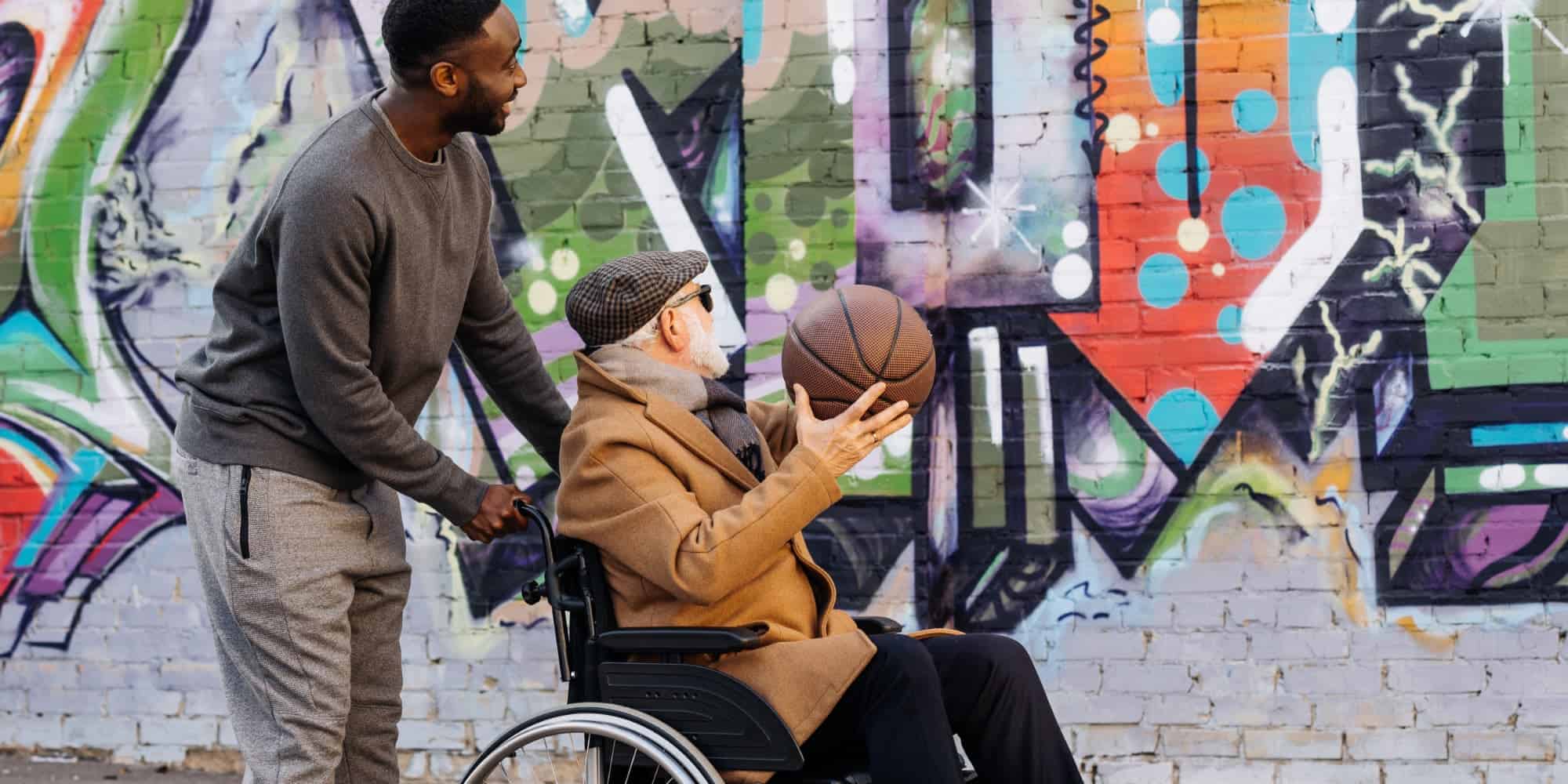Careers of professional athletes rarely last past them turning 40. A typical NBA player will start in their late teens and, provided no major injuries occur, end their playing career in their mid-thirties. Only a handful of players, which include the likes of Michael Jordan and Vince Carter, retire after 40.
That gives the average athlete about a 15 to 20-year window to build their legacy and financially secure themselves and their families.
With the contracts professional athletes get nowadays, you’d think the financial part would be easy. Millions per year for 15 to 20 years adds up to a hell of a lot of money. But you’re probably all too familiar with the stories of NBA, MLB, or NFL players going broke after retirement, despite earning the kind of money most of us will never see in our life.
These stories seem impossible, but they’re all too common. It’s estimated that 3 in 5 former NBA players will experience financial issues within a few years of ending their careers.
What do professional athletes even do following their retirement age? Some become media analysts or coaches, while others start businesses and investments. And then you’ve got players like Shaquille O’Neal, who did both to build up his $400 million net worth. But stories like this are far from the norm. The majority of retired players don’t have a plan and just go on living the high life.
That is a big problem because the lifestyle of most professional athletes is very expensive. It’s easy to finance it when there’s a huge paycheck waiting for you every couple of weeks, but once those checks stop coming, things get ugly real quick.
Alan Iverson, Mark Brunell, Dennis Rodman, and many, many more former star athletes went from multimillionaires to bankrupt in a few short years.
Shouldn’t leagues protect their players from financial hardships?
Regardless of your personal opinion on the kind of money that pro athletes make, many leagues actually take steps to protect their players from financial hardships late in life. And some do it better than others. If you’re reading this, you’re probably an NBA fan, and you may be happy to hear that the NBA has some of the best retirement benefits for their players in all of the professional leagues.
And not only that. The NBA takes a proactive approach when it comes to protecting professional basketball players and their finances. One often underappreciated segment of this are the rarely-discussed rookie education seminars where NBA rookies get the knowledge they need to thrive inside and outside the league. Managing personal finances is a topic that’s a huge part of those seminars.
Fully-guaranteed contacts, a norm in the NBA, also go a long way in providing financial security for players, even when their performance doesn’t meet expectations.
But the area where the NBA really shines, while some leagues like the NFL fail miserably, are the retirement benefits. The NBA’s retirement program, pension plan, and benefits are some of the most generous and comprehensive in all of the pro sports.
What are the benefits for retired NBA players?
Before we get to answering this question, we need to cover how the NBA actually sets players up for a financially secure retirement while they are still actively playing. Beyond the already mentioned preference for guaranteed contracts in the league, the NBA also encourages players to invest in their 401K accounts by matching their contributions up to 140%.
Just like with the players who are new to the league, the NBA also provides educational sessions on managing personal finances to players who are newly retired. Now let’s get to the actual benefits for a retired player. We can split these into three main categories: college, healthcare, and pension.
1. College
Let’s start with college, which might seem a bit odd at first, at least until you don’t stop and think about the position these players are in. While most of them have spent at least a year in college, very few have actually earned a degree.
The top prospects were either one-and-done players or they skipped college entire to play in the G-League or even overseas for a year before declaring for the draft. Players who earn a standard 4-year degree are at least 22 years old when they graduate, and the teams aren’t exactly excited about rookies at that age because their ceilings aren’t considered to be that high. This translates to substantially lower career earnings. There are some exceptions to this, like Tim Duncan, but those cases are few and far between.
So you have plenty of guys with very little college education and some leftover money from their playing days that can evaporate over a few years if not managed properly, and no earning prospects outside of basketball, a sport they no longer play.
A college degree goes a long way toward either getting meaningful employment or managing your own business. That’s exactly why the NBA encourages retired players to go back to school and earn their degrees by reimbursing tuition fees up to $33,000 a year for eligible former players. This even covers players who want to obtain a Master’s degree in their chosen field.
College tuition reimbursement is a fairly recent addition to the benefits portfolio, and not all applications for reimbursement are accepted, but the program is viewed as a big success so far.
2. Healthcare
Next up is healthcare. Active players have access to some of the best medical professionals in the world, but once they retire, they’re on their own. This was the case with retired NBA players for a very long time.
One of the most high-profile examples was that of Earl Monroe, and NBA legend who needed over 40 surgeries after he retired. Both the NBA and the NBPA told him that they were not able to help him with astronomic medical costs. Fortunately, Earl was able to get insurance through the American Federation of Television and Radio Artists. But the only reason he qualified was because he had appeared in multiple commercials during his career.
Earl got lucky in that regard, but many other players weren’t as lucky. Moses Malone and Darryl Dawkins, two legendary centers, passed away in 2015 at 60 and 58, respectively, due to health issues. Their deaths reignited the topic of healthcare for retired NBA players, with Monroe being one of the more prominent supporters of the idea.
In 2016, the NBPA and the NBA introduced a plan that guaranteed lifetime health insurance for all players with at least three years of NBA experience. The plan also covered the immediate families of players with 10 or more years of NBA experience. And the health insurance plan doesn’t just cover basic healthcare, visits to mental health specialists are also covered.
The best part is the way years of experience are calculated. In order to have a year of experience, a player must be under contract for at least one game during the season. They don’t even have to be active for that game. If they’re under contract, it counts.
This level of coverage puts the NBA a cut above the other pro sports league, many of which don’t offer anything to their former players in terms of healthcare.
3. Pension Plan
Finally, we have the pensions, by far the oldest of all the benefits available to retired NBA players. Established in 1965, these pensions work pretty much as you’d expect. Once they reach the required age, players with enough years of experience in the NBA are eligible to start receiving monthly pension payments based on the number of months they spent in the NBA.
The amounts increased several times since they were first established, with the latest increase that raised payments by 50% coming in 2017. The costs of the pension program, including this latest pension fund increase, are split between the NBA and the NBPA.
The earliest players can start receiving this benefit is 45 years of age, but the payments for players who elect to start receiving pensions then will be reduced because they will be receiving them for longer on average. If they want to secure the highest possible payments, players should wait until the age of 62.
A 10+ year NBA veteran will get around $215k per year if they start receiving payments at 62. Players with three years of NBA experience will get around $57k annually if they start receiving them at age 62.
Who is behind the benefits?
There are two main groups within NBA circles that work to improve the benefits for retired players. The first is the NBRPA, the National Basketball Retired Players Association, an organization similar to the NBPA, but made of up retired basketball players. As you probably guessed, their mission is to support retired NBA players in any way they can.
The second group is the National Basketball Players Association (NBPA), which is made up of active NBA players. Superstars like Lebron James and Kyrie Irving are on or have been members of the Executive Committee.
Their reason for championing the cause of retired players is fairly simple. It’s just a matter of time before they themselves join the ranks of retired NBA players, and they naturally want to secure themselves the best retirement conditions they can.
But the motives of the NBPA aren’t purely as selfish as the last paragraph may make them out to be. Many of the moves they make to support retired players also stem from genuine respect and appreciation for the generations that came before and helped build the NBA into what it is now.
The existing benefits would be much harder to implement if it wasn’t for the support of the NBA itself and the ownership structures of the league’s teams. Compared to other pro sports leagues, the NBA is one of the most player-friendly leagues in the US. We can only hope that other major leagues follow the NBA’s leadership and bring the benefits for their retired players to a similar level.

